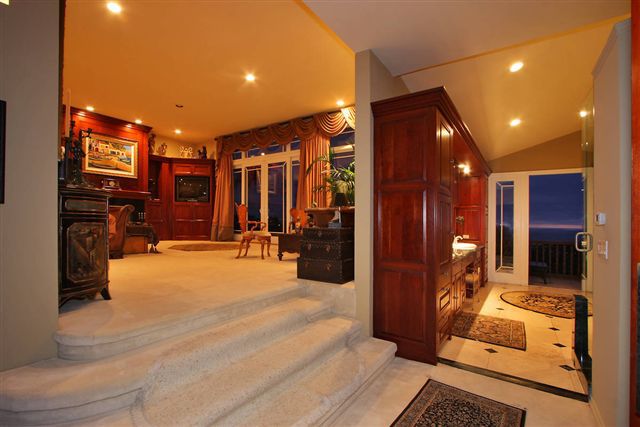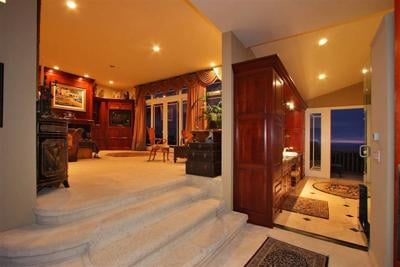For the last year, many highly regarded news sources including the Wall Street Journal, ABC News, and The Daily Transcript have reported on the onset of Asian Investors and their increasing interest in Southern California real estate.
With the San Diego real estate market regaining momentum over the last several years, astute real estate agents and homeowners alike are doing their best to attract these wealthy cash buyers, often by setting themselves—and their homes—apart from the pack. Their strategy? The time-honored discipline of Feng Shui.
Feng Shui: The Art of Chinese Architecture
Feng Shui takes the term "home Inspection" to an entirely new level. It is an approach that not only takes into account visual appeal but the bigger picture as well—the bigger picture being the connection between a home and the influence it will have on the well-being of its occupants over time. So how do you know what these wealthy investors are looking for and, more specifically, how do you know if a house has good Feng Shui?
Feng Shui is a complex system, to put it mildly. However, there are several factors that will immediately determine whether or not a property has good Feng Shui. The surrounding landscape and neighboring buildings is one consideration; the floor plan and room configuration are another; and the presence or absence of certain structural features such as stairways, fireplaces, water features, and overhead beams (including high/low and sloped ceilings) present still another.
You needn’t be a savvy real estate agent or homebuyer to know that the surrounding landscape and neighborhood are pivotal to forming a favorable or unfavorable first impression (this is commonly referred to as curb appeal). The goal in Feng Shui, however, is to create a front entrance (or "Ming Tang") that is both attractive and inviting to draw in healthy, life-sustaining energy and, in the case of real estate, prospective buyers, as well. This life-enhancing energy, often referred to as Ch’i/Qi, is believed to attract such things as good fortune: vital health, abundant opportunities, and financial stability. Hence, a less desirable environment attracts less desirable energy.
Feng Shui Begins Outside the Home

Feng Shui begins outside the home
From a traditional perspective, the ideal surrounding topography should symbolize what is referred to as the "armchair position," namely, a large supportive mountain or hill behind the structure, which tapers off gently along the sides, with an open, inviting front entrance where the Ch’i can gather before entering the house. It is considered undesirable to have anything that blocks the healthy flow of energy (and luck) into the main entrance of a property. This could include such things as walls, fences, pillars/columns, trees, etc. When Ch’i cannot properly enter a structure, the energy is unable to adequately feed and nourish the house and its occupants. It is also advisable to take note of busy roadways, T-junctions, railroad tracks, power poles, and anything else nearby of a property that could be deemed as undesirable, due to the negative influence it can have on the healthy distribution of energy.
Regarding interior layout, some homes have more advantageous floor plans due to their shape and symbolic completeness. For instance, a house that is square or rectangular is considered structurally complete, whereas an irregular-shaped house that has indentations or protrusions, such as an L, T, H, or U-shaped home, is not. In these instances, a section or sections of the house is considered "missing" which can have a direct, adverse effect on the house and, indirectly, on the occupants and their well-being. It is, therefore, necessary to take measures to correct missing corners and void areas, thereby bringing balance (completeness) to the entire structure. With this in mind, the use of Feng Shui is essential whenever remodeling is being considered because when you change a floor plan, you may also change the shape of a home and, inadvertently, the type of luck contained within the home.
Energy Flow and Ch'i

Feng Shui promotes energy flow all throughout the house
In addition to layout and traffic/energy flow, there are other considerations for good Feng Shui. This is especially true for the siting of certain rooms and specific features within the home. Namely, there should be mindfulness concerning the placement of fireplaces, water features, staircases, kitchens, bathrooms, and master bedrooms. The location of each of these rooms/features can have a profound, if not detrimental, effect on the flow of Ch’i, causing the energy to be supportive or unsupportive. Fortunately, one of the benefits of Feng Shui is that it allows us to recognize what currently isn’t working within a home, and then adjust things so they do work, or in other words, transform the unfavorable into the favorable.
This is accomplished, in large part, by learning how to read the energy within an environment to determine if it is auspicious or inauspicious and, also, by looking for patterns. For better or worse the history of a home can be very revealing, especially when there is a recurring pattern over the course of time. This said, however, the history of a home does not necessarily have to dictate the future successes and luck within that home. Energy that is not serving the best interests of the current occupants, whether it’s related to illness, divorce, or financial challenges, needs to be identified and adjusted. This is accomplished through various enhancements and cures. As an example, a water feature located on the right side of the front door (facing out) corresponds to infidelity and can result in marital difficulties. The removal of the water feature will solve this issue.
Use of Color, Lighting and Imagery

This beautiful foyer demonstrates sound Feng Shui practices
Many of the techniques used in Feng Shui are straightforward and are, quite often, confused with interior design concepts. Contrary to interior design, however, the use of color, symbolic imagery, plants, lighting, and furniture placement is not an arbitrary decision. Rather, they are decisions that are based on the health and well-being of the living space and, likewise, each member of the family. These decisions are not only considered for the short term but, in particular, for long-term happiness.
The fact that Feng Shui originated in China over four thousand years ago and is currently practiced, studied, and embraced worldwide with increasing regard, is a testament to its ongoing relevance. Feng Shui helps us to understand the intimate connection between the seen and unseen elements within a home and offers a new (albeit time-honored) perspective on living in harmony with the world around us.








(0) comments
We welcome your comments
Log In
Post a comment as Guest
Keep it Clean. Please avoid obscene, vulgar, lewd, racist or sexually-oriented language.
PLEASE TURN OFF YOUR CAPS LOCK.
Don't Threaten. Threats of harming another person will not be tolerated.
Be Truthful. Don't knowingly lie about anyone or anything.
Be Nice. No racism, sexism or any sort of -ism that is degrading to another person.
Be Proactive. Use the 'Report' link on each comment to let us know of abusive posts.
Share with Us. We'd love to hear eyewitness accounts, the history behind an article.